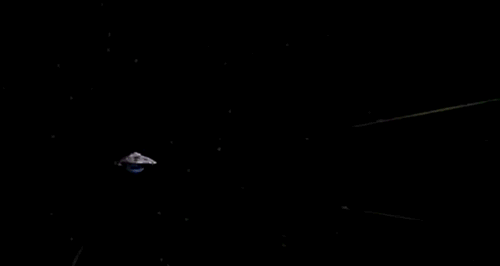Science
Related: About this forumA new class of galaxy has been discovered, one made almost entirely of dark matter
Source: Washington Post
A new class of galaxy has been discovered, one made almost entirely of dark matter
By Rachel Feltman August 25 at 1:00 PM
It's no secret that most of the universe is made of dark matter, the unknowable, as-yet-undetected stuff that barely interacts with the "normal" matter around it. In the Milky Way, dark matter outnumbers regular matter by about 5 to 1, and very tiny dwarf galaxies are known to contain even more of the stuff.
But now scientists have found something entirely new: a galaxy with the same mass as the Milky Way, but with only 1 percent of our galaxy's star power. About 99.99 percent of this other galaxy is made up of dark matter, and scientists believe it may be one of many.
The galaxy Dragonfly 44, described in a study published Thursday in the Astrophysical Journal Letters, is 300 million light years away. If scientists can track down a similar galaxy closer to home, however, they may be able to use it to make the first direct detection of dark matter.
The researchers who found Dragonfly 44 weren't looking for a dark galaxy. Another surprise: They found it using a telescope built out of camera parts. The Dragonfly Telephoto Array was built by a group of astronomers at Yale University and the University of Toronto who realized that telephoto lenses — so often used for nature photography and sporting events — were well-suited for spotting the kind of large, dim objects that pose problems for typical telescopes.
[font size=1]-snip-[/font]
Read more: https://www.washingtonpost.com/news/speaking-of-science/wp/2016/08/25/a-new-class-of-galaxy-has-been-discovered-one-made-almost-entirely-of-dark-matter/
__________________________________________________________________________
Related: A High Stellar Velocity Dispersion and ~100 Globular Clusters for the Ultra Diffuse Galaxy Dragonfly 44 (Astrophysical Journal Letters)
__________________________________________________________________________

[font size=1]Dragonfly 44 is very faint for its mass and consists almost entirely of dark matter. (Pieter van Dokkum, Roberto Abraham, Gemini Observatory/AURA)[/font]
niyad
(113,048 posts)and enablers.
seriously, though, k and r for this excellent information.
cstanleytech
(26,224 posts)niyad
(113,048 posts)byronius
(7,389 posts)tclambert
(11,084 posts)niyad
(113,048 posts)Buckeye_Democrat
(14,852 posts)rurallib
(62,373 posts)aeroman
(64 posts)And think that this time I may be able to understand what is being said, but after about a paragraph or so I am soooo lost. Politics I get. I know more than 99% of everybody about Politics, but space. Damn man, I am lost. Space is sooo overwhelming. It's almost even too much to even grasp and comprehend.
Buckeye_Democrat
(14,852 posts)1. Astronomers noticed years ago that galaxies and galaxy clusters don't orbit around their centers of mass like expected -- e.g., objects far from the center orbited much faster than gravitational laws expected. Some scientists speculated that there might be a large cloud of unseen matter around and within these distant objects that could help explain the orbits of the visible objects.
2. Anything with mass (or energy) bends the fabric of space-time, and that causes passing light to bend along such curvature. It can create an effect known as "gravitational lensing" if a distant galaxy's light goes around objects with mass. General Relativity provides a means to calculate the light bending.
3. Astronomers noticed that light from distant galaxies gets bent far more than expected from what's visible in more nearby galaxies, so that's an indication that there's indeed more mass than what's expected.
4. A "smoking gun" for dark matter was the observation of the "Bullet Cluster," galaxies that collided. Most of the mass from ordinary matter rubbed against each other and heated up near the center. Objects like stars, which are separated by vast distances and actually aren't the source of most galactic mass despite their high densities, passed by each other. Thus, most of the gravitational lensing should have been observed near the center where the diffuse gas molecules collided. Instead, most lensing was detected near the outside with the stars (which had collectively less mass). That's an indication that the mysterious matter, called dark matter, also mostly passed through with little interaction to other particles.
5. Nobody yet knows what comprises dark matter, but it apparently has lots of mass and it apparently doesn't interact with ordinary visible matter very much, if at all, except by gravity.
tavernier
(12,368 posts)but I need to see it in simpler terms, if possible. So let's say our sun is an apple, and all stars are apples. Would an object that is considered dark matter be incomparable, let's say an orange? Or would it be invisible? Or opaque?
Or am I way off??
Buckeye_Democrat
(14,852 posts)... that have never been detected before. It wouldn't be composed of "ordinary particles" that make up the Sun, planets, us, etc.
It's believed to be passing through us undetected all the time. Gravity is a VERY weak force compared to other forces. Since gravity is always additive, it only becomes very noticeable when large bodies of mass clump together, mostly from other forces. The dark matter would be very hard to detect if it doesn't clump together. EDIT: Dark matter's collective gravity would be quite large if it's indeed widely dispersed around galaxies in huge numbers.
They're looking for signs of dark matter at the Large Hadron Collider, but they'll probably only detect momentum imbalances if it's created there. It will be indirect evidence, in other words.
Colliders create particles out of the surrounding space due to the energy of the collisions -- i.e., E(nergy) = M(ass)*C^2. A large amount of energy is "equivalent" to a small amount of mass since C (the speed of light) is a big number. The created particles aren't the "innards" of the colliding particles. I'm not sure why I went into that, but you might think it's interesting.
It's possible that dark matter isn't composed of unknown particles outside of ordinary matter at all. Could it be low-mass black holes? There's been all kinds of speculation. Many physicists have reasons for liking the non-clumping, slow-moving (cold), gravity-interacting idea more than others.
tavernier
(12,368 posts)Ok. That makes sense.
We just have to discover the properties of this unknown entity.
yuiyoshida
(41,818 posts)But the problem is, it will take a hell of a long time to get there..

nomorenomore08
(13,324 posts)to reach a galaxy 300 million light-years away...
http://www.st-minutiae.com/resources/warp/
yuiyoshida
(41,818 posts)
when she Came home to the Alpha quadrant from the Delta. Find ways to jump though worm holes, (hoping they were pointed in the right direction!)

sakabatou
(42,134 posts)Use a transwarp drive or travel through Borg tech.
yuiyoshida
(41,818 posts)sakabatou
(42,134 posts)yuiyoshida
(41,818 posts)then there is nothing wrong with that!
Thor_MN
(11,843 posts)I wonder if there are alternate pathways that lead to stars that just run out fuel without all the fireworks? Just cool off and become inert?